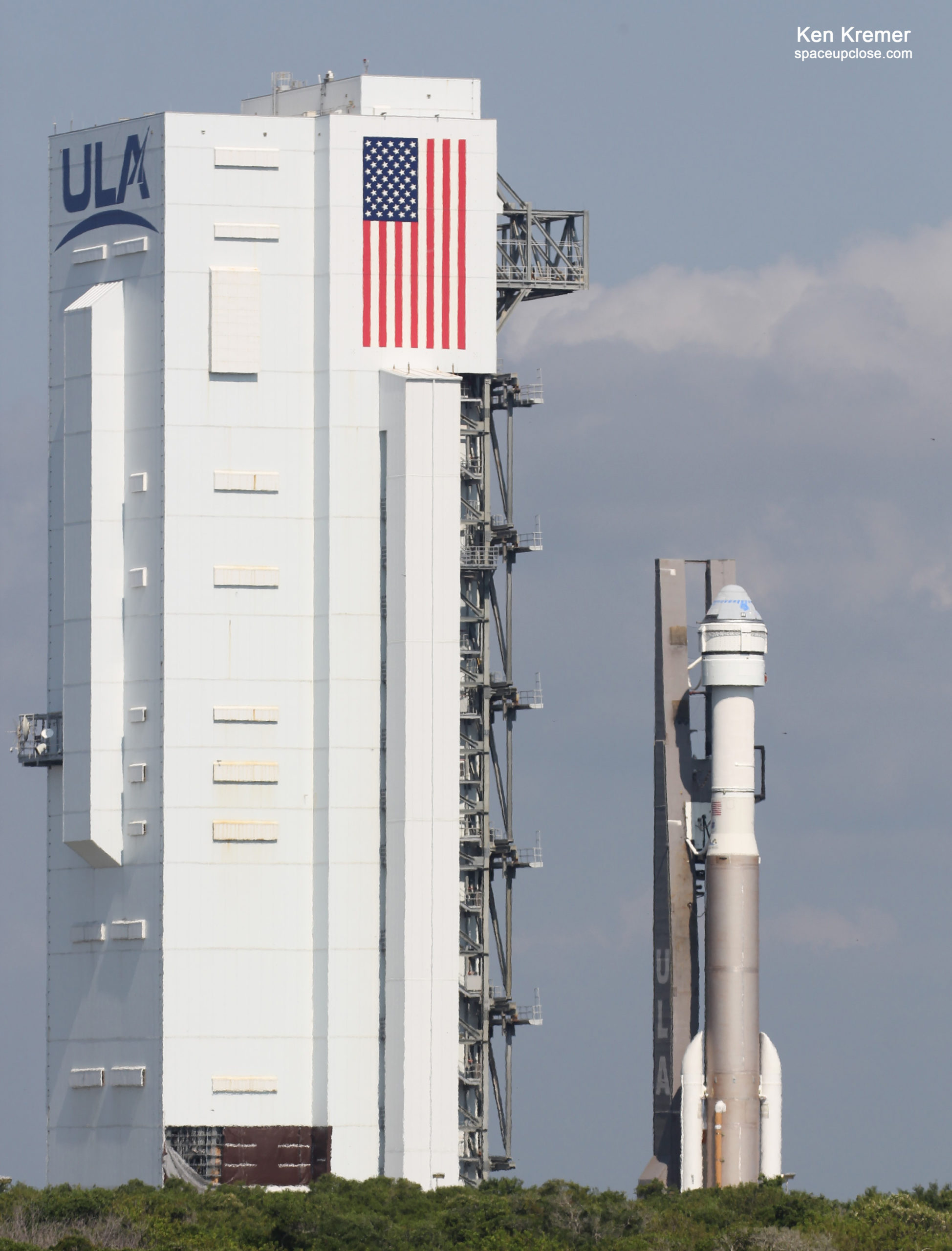
For SpaceUpClose.com & RocketSTEM
KENNEDY SPACE CENTER/CAPE CANAVERAL SPACE FORCE STATION, FL – Boeing’s CST-100 Starliner crew capsule integrated atop a United Launch Alliance (ULA) Atlas V rocket rolled out from the ULA Vertical Integration Facility (VIF) to launch pad 41 on Cape Canaveral Space Force Station in Florida, Wednesday morning, May 18, in anticipation of the critical uncrewed launch of the Boeing Orbital Flight Test-2 (OFT-2) for NASA to the International Space Station – on a high stakes and absolutely critical mission to prove the spacecraft can successfully dock at the orbiting outpost and eventually carry astronauts.
The long delayed OFT-2 is a demonstration test flight required to prove that the Boeing capsule can safely and successfully ferry NASA and partners astronauts to and from low Earth orbit and the space station – following the failure of the original OFT-1 mission to dock at the ISS back in 2019 followed by a technical scrub of the OFT-2 mission last year that required repairs.
Liftoff of the 17-story tall ULA Atlas V carrying the Boeing CST-100 Starliner OFT-2 is scheduled for dinnertime Thursday, May 19 at 6:54 p.m. EDT (2254 GMT) from seaside Space Launch Complex-41 on Cape Canaveral Space Force Station in Florida during the instantaneous launch window.
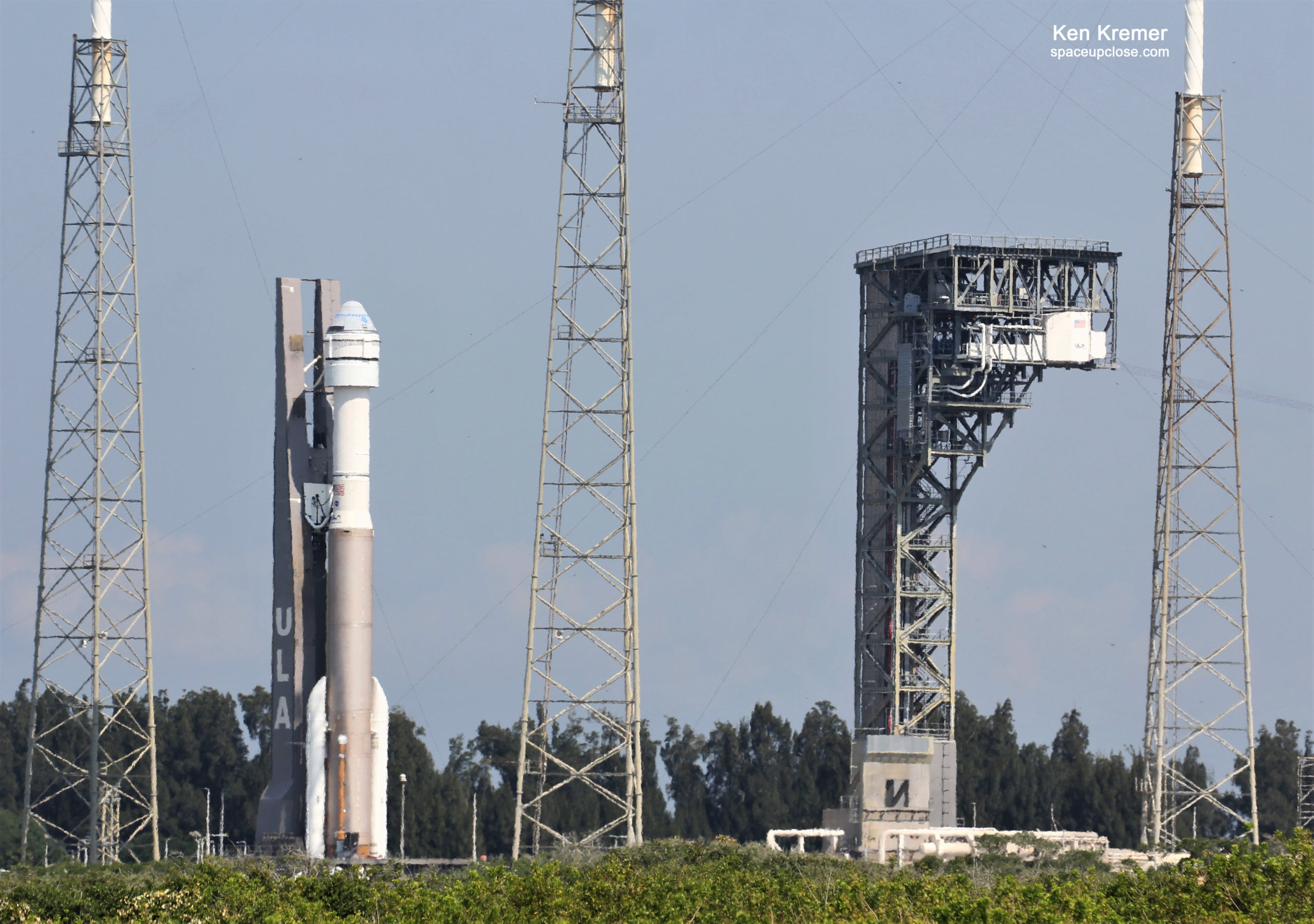
Rollout of the 172-foot-tall (52.4-meter) Atlas V/Starliner stack on the Mobile Launcher from the 30-story Vertical Integration Facility at Space Launch Complex-41 began at appox.10:15 a.m. (1415 GMT) Wednesday morning, May 18.
Two “trackmobile” vehicles pushed the integrated rocket and spacecraft on rail tracks for the 1,800-foot (550-meter) journey from the VIF to pad 41.
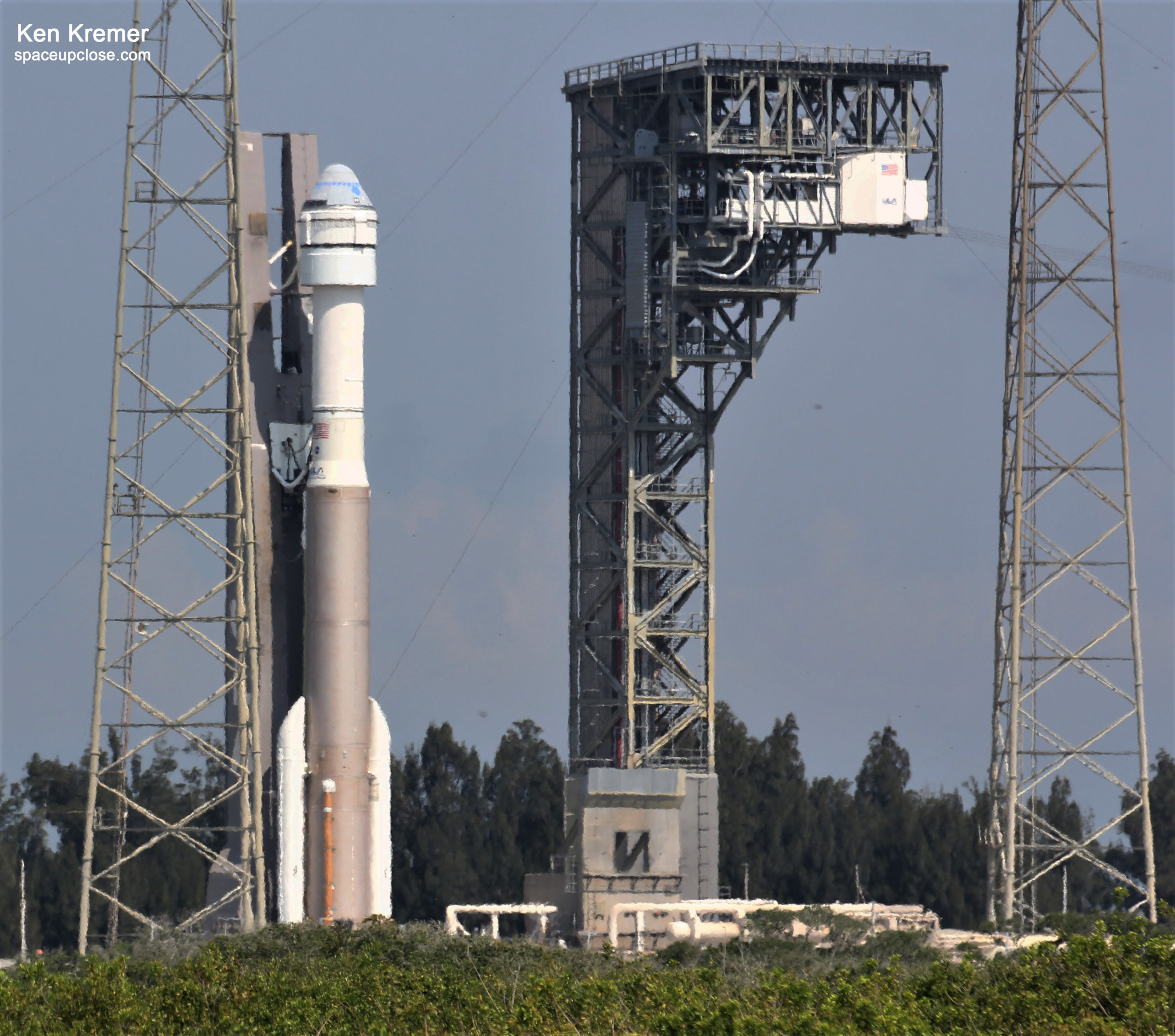
The unique Atlas V/Starliner arrived at the pad at approx. 40 minutes later at 10:55 a.m. ET (1455 GMT) Wednesday.
ULA teams then began launch pad operations to ready the OFT-2 mission for liftoff Thursday evening, May 19.
Enjoy our Atlas V rollout photos taken by the team of Ken Kremer and Jean Wright for Space UpClose.
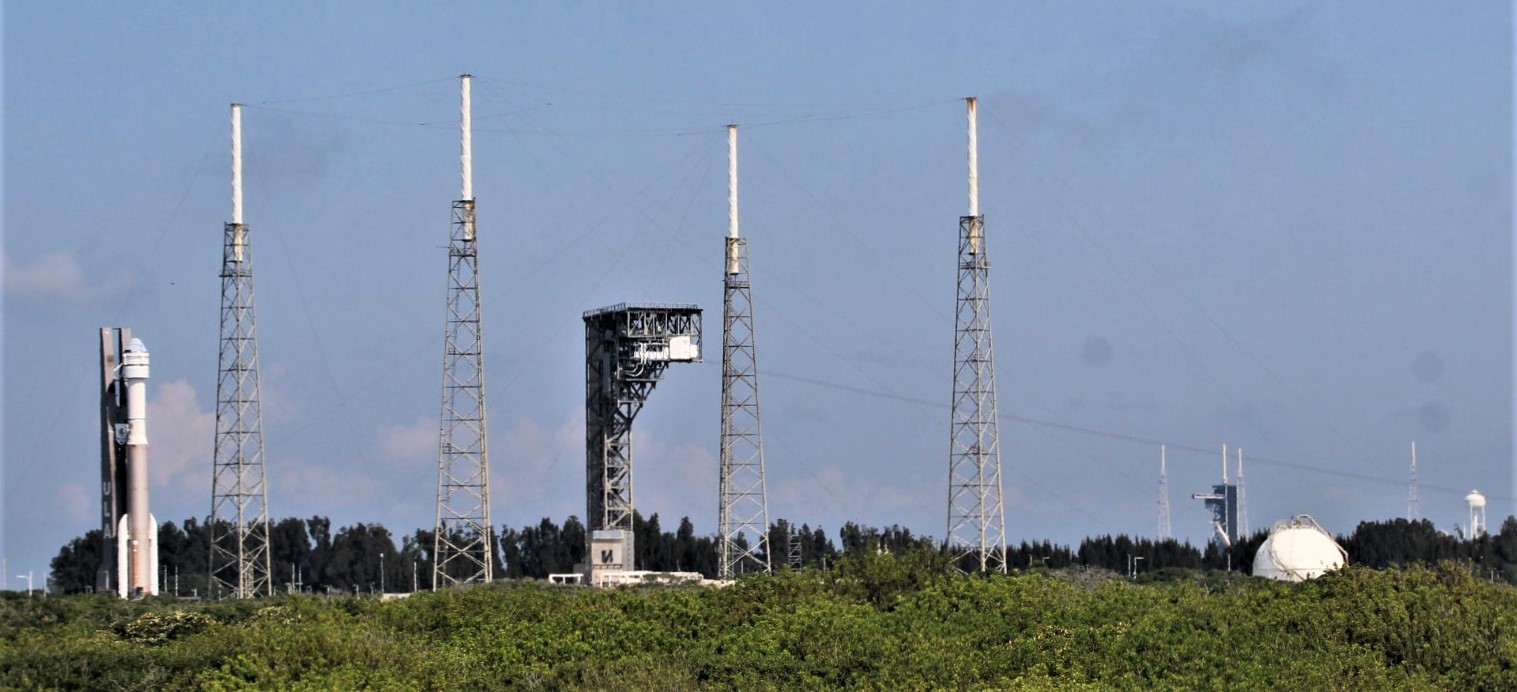
Also be sure to check out our UpClose photos of the ULA Atlas V/Starliner taken at pad 41 during our media remote camera setup opportunity, Wednesday afternoon, May 18.
Launch weather continues to look promising at the moment.
Meteorologists with the U.S. Space Force 45th Weather Squadron continue to predict a 70% chance of favorable weather.
The primary weather concerns for launch day are the cumulus and anvil cloud rules violations during the instantaneous launch window.

In case of a 24 hour delay a back up launch opportunity is available on Friday, May 20.
However weather conditions deteriorate as moist weather move in over central Florida and the Cape and the forecast drops to only a 40% chance of favorable weather.
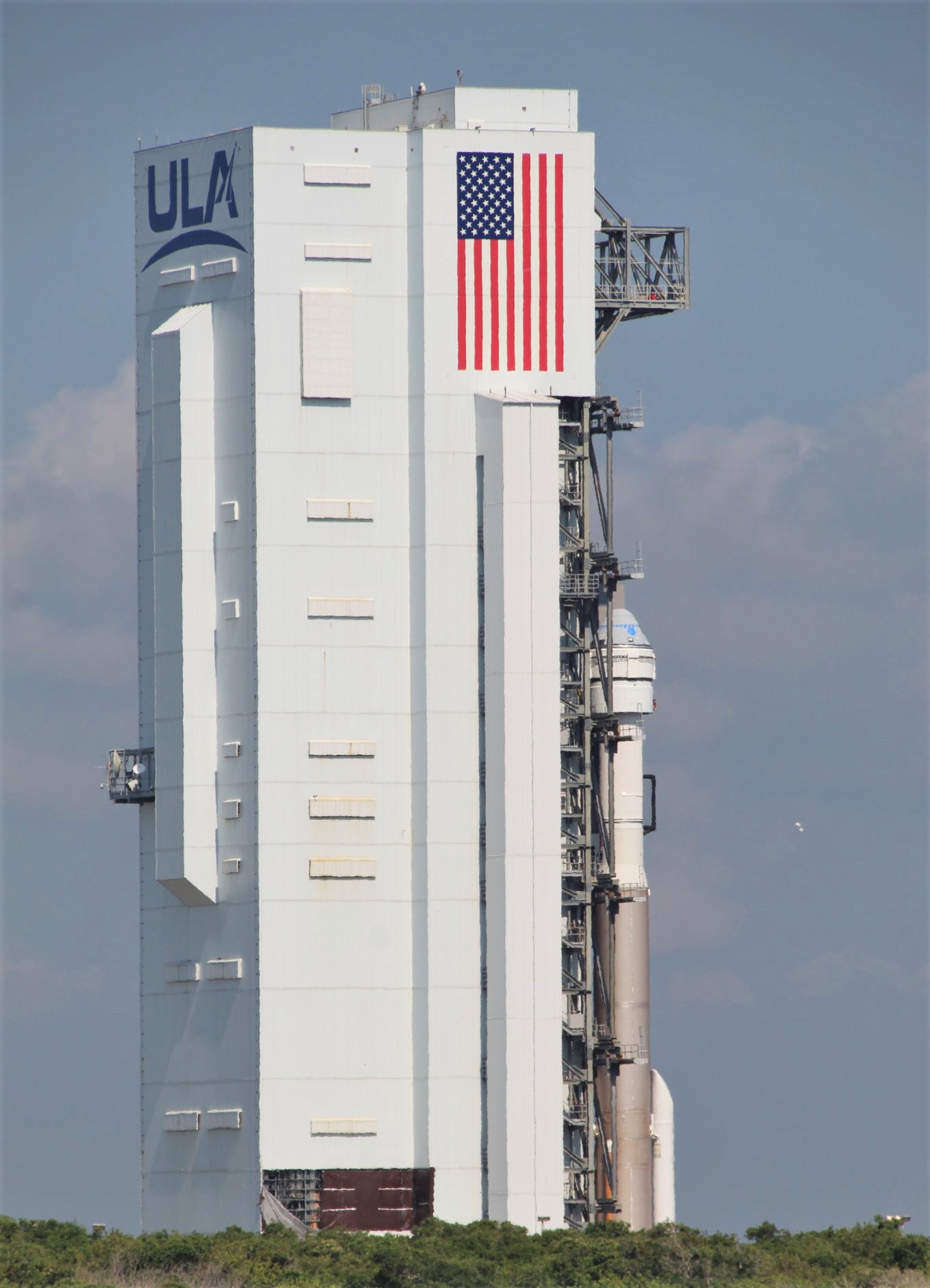
Starliner is planned to dock at the forward facing port on the Harmony module just over 24 hours after liftoff at 7:10 p.m. ET on Friday, May 20.
The ISS crew will actively monitor the approach
If all goes well, Starliner will remain docked at the ISS for about 4 or 5 days
Boeing added the OFT-2 mission at their own expense totaling about $595 Million to get the Starliner program back on track by making repairs to hardware and software issues uncovered during both launch campaigns and required by a joint investigation board of inquiry that listed some 80 areas of improvement in a formally issued Review document
The OFT-2 mission was initially scheduled to blast off last summer in August 2021 but was scrubbed after heavy rain squalls and after the Boeing team discovered 13 stuck propulsion valves inside the Starliner service module that must function to maneuver the capsule in flight and in orbit.
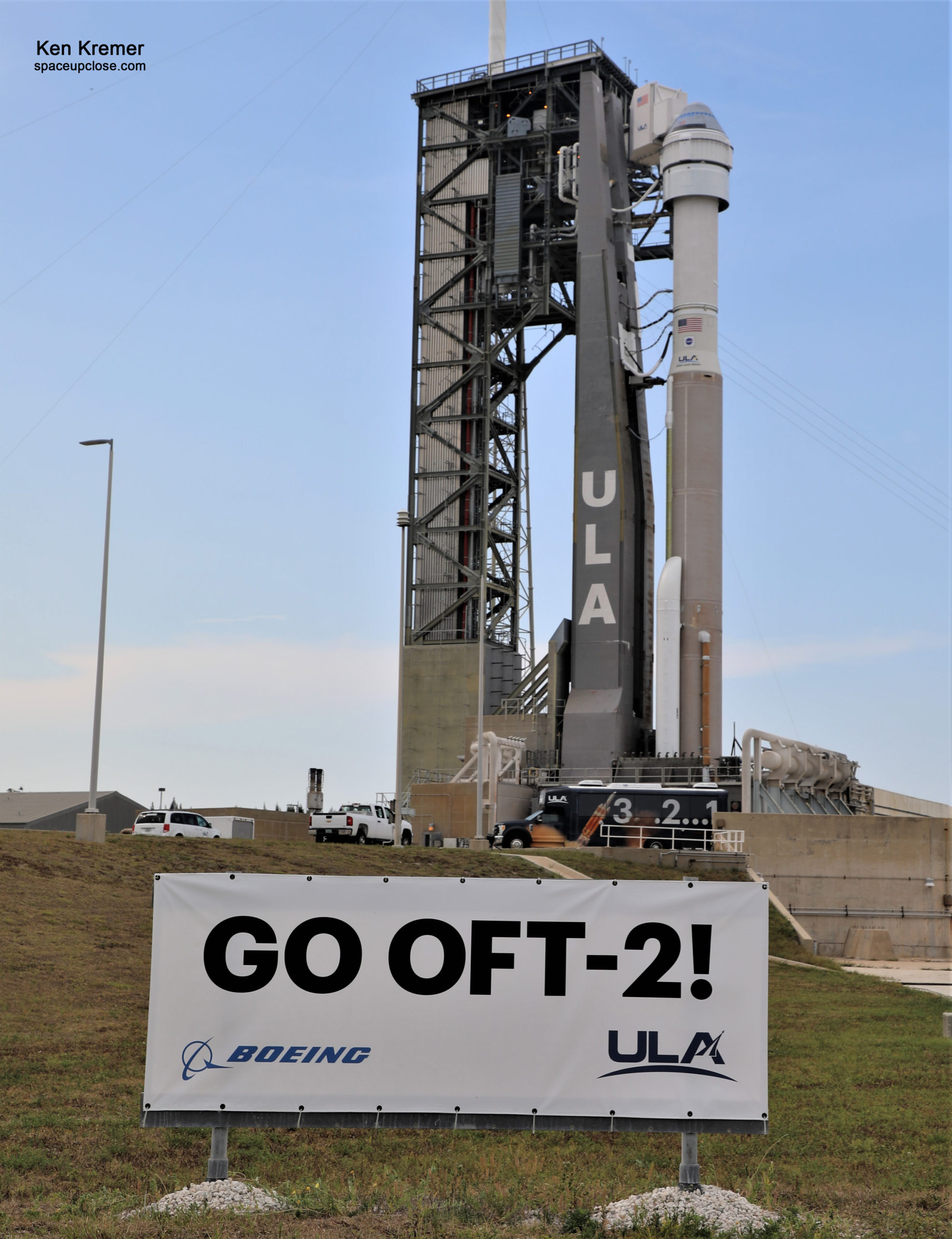
The Boeing pad operations team will close the hatch to the Starliner inside the White Room ahead of its liftoff
Inside the Starliner is “Rosie the Rocketeer,” an anthropometric test device, and about 800 pounds (362 kilograms) of cargo, 500 pounds (227 kilograms) for NASA, bound for the International Space Station.
The Atlas V RD-180 main engine and two solid rocket boosters will ignite to generate more than a million and half pounds of thrust to lift the rocket away from the pad. The RD-180 main engine burns 48,800 gallons of liquid oxygen and 25,000 gallons of RP-1 fuel, a highly refined kerosene, to generate 860,300 pounds of thrust.
The Centaur is powered by two RL10A-4-2 engines that consume 12,300 gallons of liquid hydrogen and 4,150 gallons of liquid oxygen to generate a combined 44,600 pounds of thrust to shape the desired trajectory for Starliner. During the flight, Atlas V will accelerate Starliner to 17,475 mph.
The powered flight of Atlas V to launch Starliner’s OFT-2 lasts about 11 minutes and 55 seconds. The first stage of flight will last about 4 minutes and 30 seconds. The single burn of the Centaur lasts about 7 minutes and 10 seconds.
More from Boeing:
“Various tests have been completed to ensure all systems between the rocket and spacecraft are communicating and functioning properly before roll to the pad.
Teams conducted numerous checks, including a power up of the spacecraft’s avionics system, health checks of the batteries, propulsion system, ordinance system and data flight instrumentation (DFI). Teams also performed interior/exterior inspections, and side hatch leak testing. To date, frequent cycling of the oxidizer isolation valves has been successful in showing repeated valve performance.
Tracking and Data Relay Satellite (TDRS) testing also took place to confirm telemetry and command capability between the launch vehicle and spacecraft and Starliner Mission Control in Houston.
Final standard prelaunch preparations include loading “late stow” cargo at the launch pad, a final software Mission Data Load with standard prelaunch updates for relative navigation, space weather, inertial navigation and propellant quantities.”
Here are my prelaunch interview comments with WFTV ABC News Orlando
“What NASA wants are two competing systems which are dissimilar to get our astronauts to the International Space Station,” Dr Ken Kremer of Space UpClose said to WFTV ABC News Orlando. “If one of them goes down, we still have another one.”
“Everything has to go extremely well.”
“It does seem like the rocket and the spacecraft are ready,” said Kremer. “But the stakes are extremely high after one failure and then a launch delay last year.”
Stay tuned at Space UpClose for continuing updates directly from the KSC Press Site and Cape Canaveral Space Force Station
Watch Ken’s commentary about Starliner, NASA SLS WDR demo test, NASA Crew-3, Crew 4 and SpaceX AX-1 missions and Starlink.
May 11: WFTV ABC Orlando News featured my commentary & analysis about Boeing Starliner crew capsule targeting launch May 19 for long delayed OFT2 uncrewed test flight for NASA after completing FRR this afternoon. It must dock at ISS to be considered successful to enable follow-on NASA astronaut flights maybe by late 2022
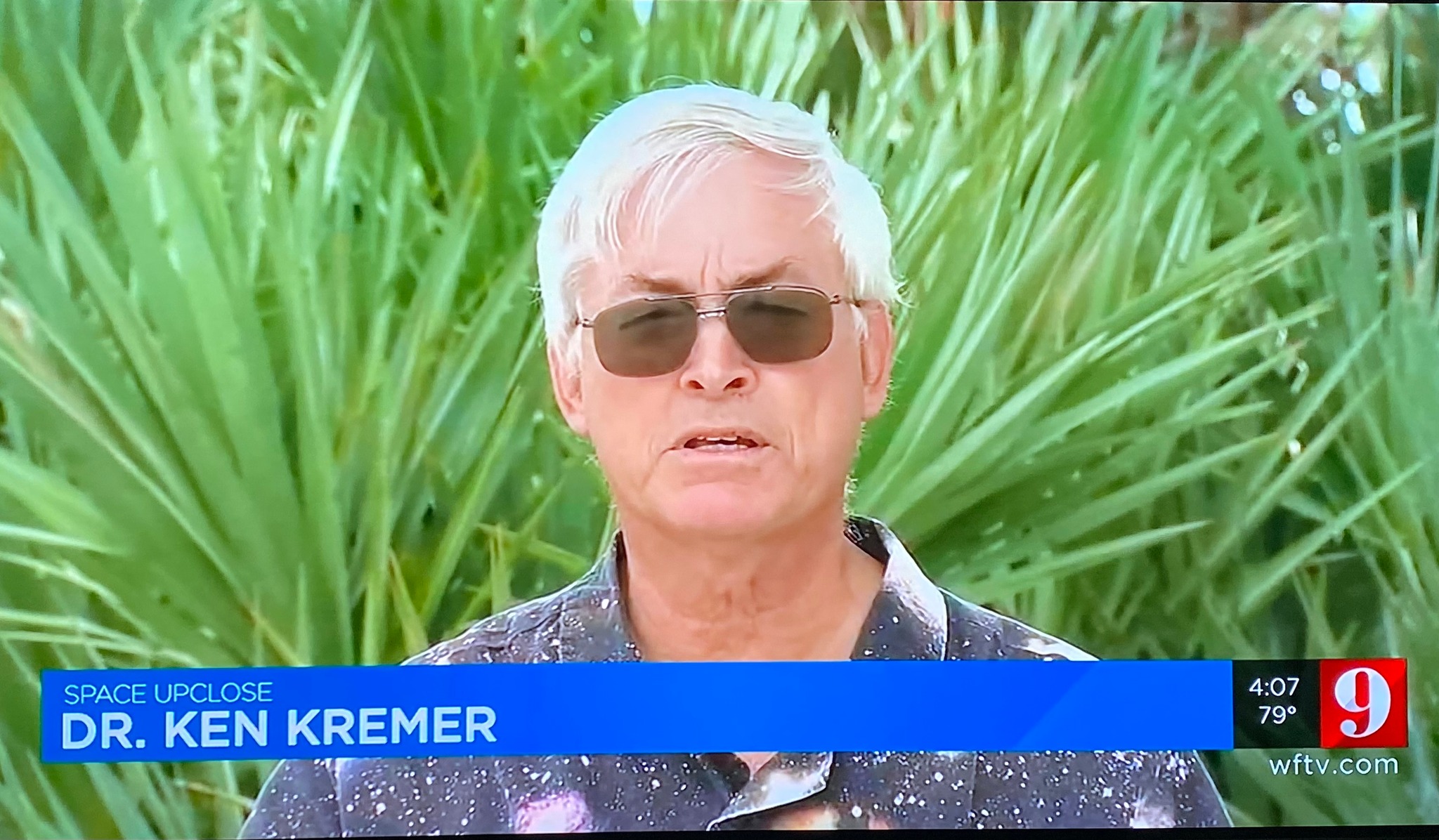
Apr 29: WKMG CBS 6 with my commentary about the record setting Falcon 9 turnaround of 21 days since the Axiom-1 launch
Apr 22: Fox 35 Orlando features my analysis of the busy week ahead in space with weather delayed Earth return of AX-1 crew this weekend, launch of 4 NASA/ESA Crew-4 astronauts on SpaceX Crew Dragon NET Apr 26 & rollback of NASA SLS to VAB for repairs
https://www.fox35orlando.com/video/1060937
Apr 20: WFTV ABC News Orlando features my commentary about the SpaceX static fire and impact of weather induced delays to departure of Ax-1 and launch of Crew-4.
Apr 15/16 & Apr 12/13: WFTV ABC News Orlando and WKMG CBS 6 Orlando featured my comments about NASA SLS WDR wet dress rehearsal countdown and fueling demo test and human launches to ISS:
Apr 6: WFTV ABC 9 Orlando featured my comments about 1st fully private astronaut launch to ISS by SpaceX on AX-1 mission:https://www.wftv.com/news/local/brevard-county/first-all-private-astronaut-mission-iss-set-liftoff-kennedy-space-center-this-week/FYE5QAT735BA7G42O6IVCJGB4Q/
Apr 4 & 5: WFTV ABC News Orlando and Fox 35 Orlando featured my comments about NASA SLS WDR wet dress rehearsal countdown and fueling demo test and human launches to ISS
https://www.fox35orlando.com/news/nasa-resumes-artemis-i-wet-dress-rehearsal-countdown
Watch Ken’s continuing reports about Artemis, SLS, Orion and NASA missions, SpaceX Crew and Cargo Dragons, SpaceX Axiom-1, JWST, IXPE, DART, Lucy Asteroid mission, GOES, SpaceX Starlink, Commercial Crew and Starliner and Crew Dragon, Blue Origin and Space Tourism, and onsite for live reporting of upcoming and recent SpaceX and ULA launches including Crew 1 & 2 & 3 & 4, ISS, Solar Orbiter, Mars 2020 Perseverance and Curiosity rovers, NRO spysats and national security missions and more at the Kennedy Space Center and Cape Canaveral Space Force Station.
Stay tuned here for Ken’s continuing Earth and Planetary science and human spaceflight news: www.kenkremer.com –www.spaceupclose.com – twitter @ken_kremer – email: ken at kenkremer.com
Dr. Kremer is a research scientist and journalist based in the KSC area, active in outreach and interviewed regularly on TV and radio about space topics.
………….
Ken’s photos are for sale and he is available for lectures and outreach events
Please consider supporting Ken’s work by purchasing his photos and/or donating at Patreon
x



